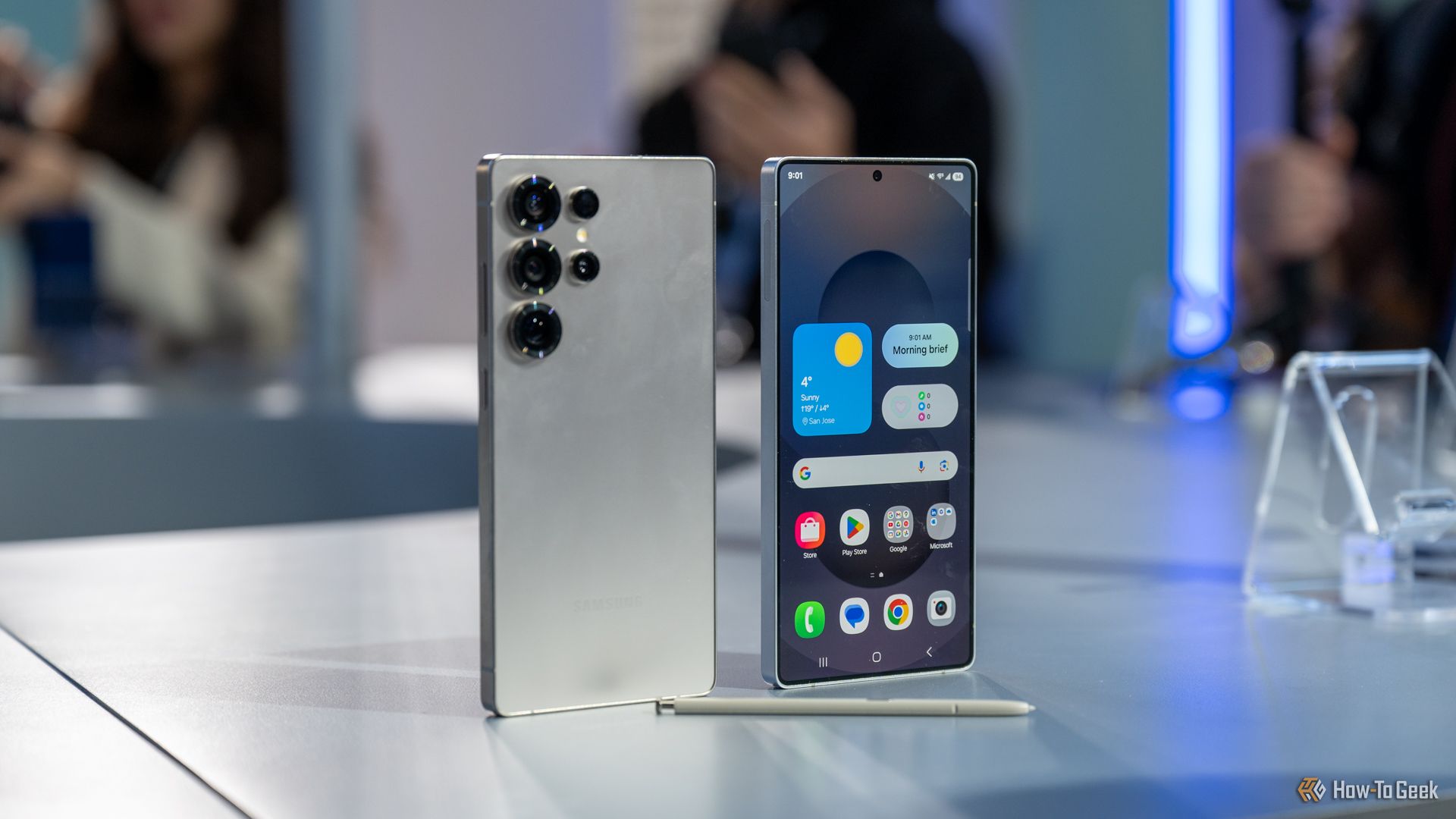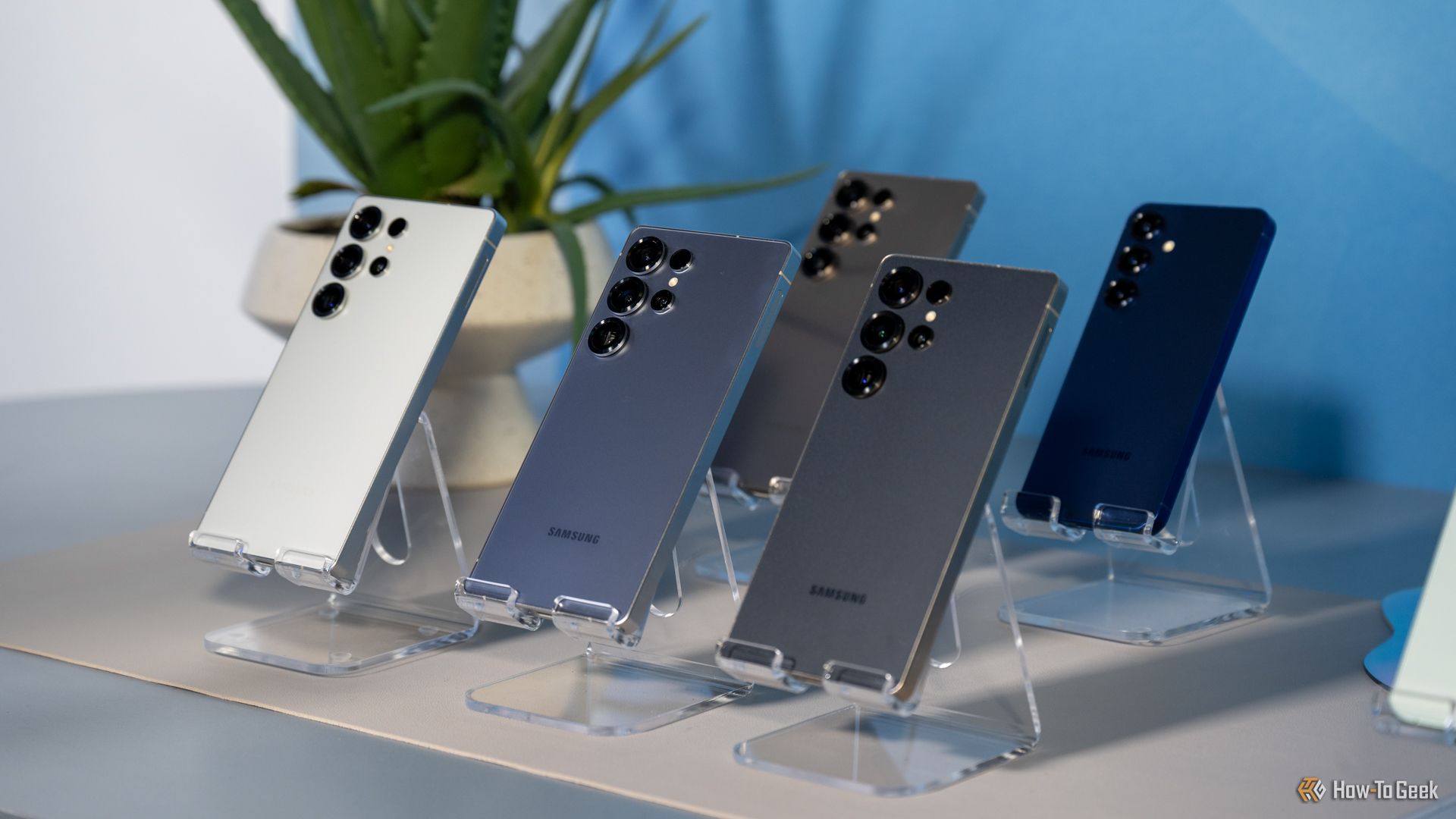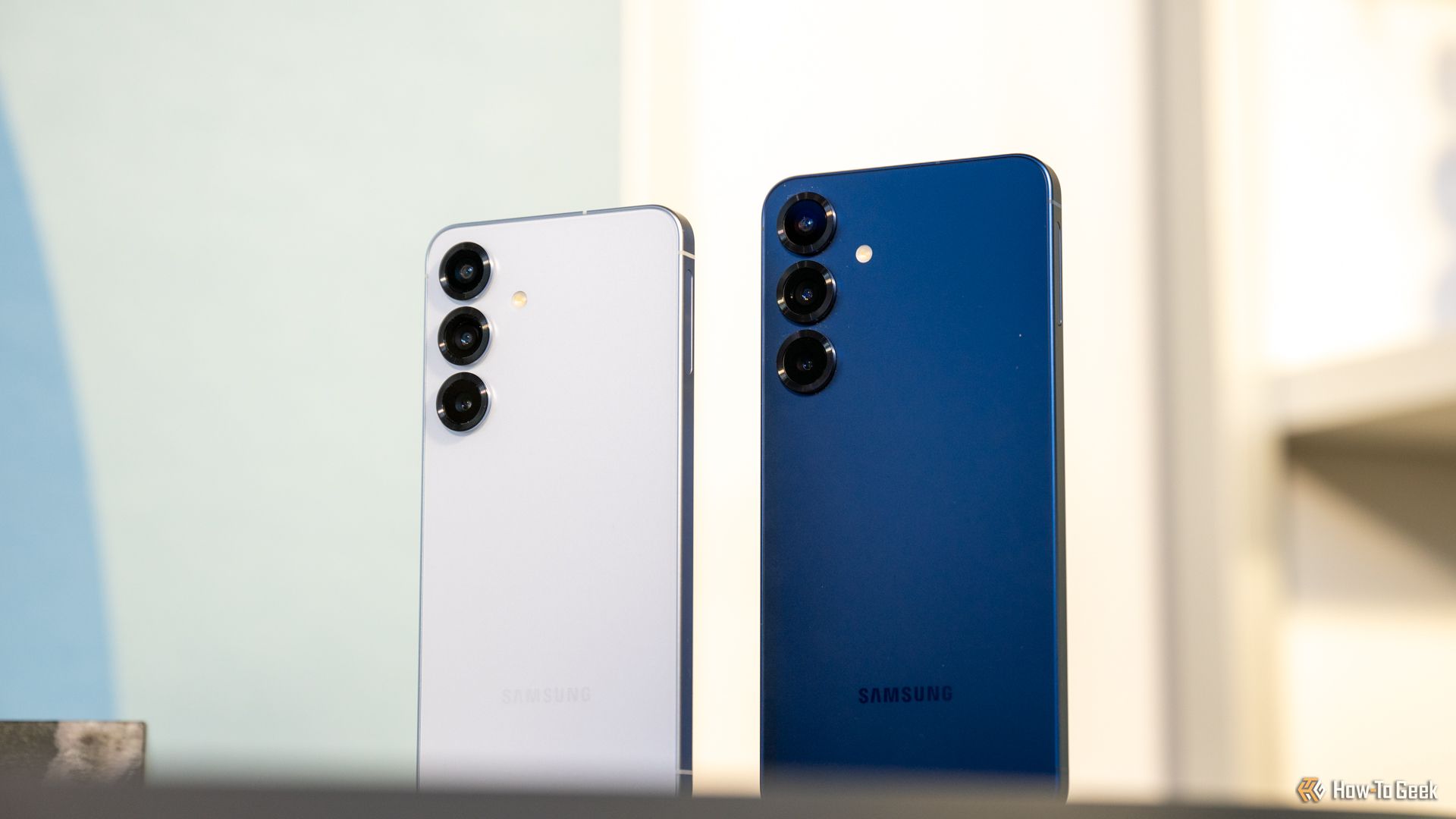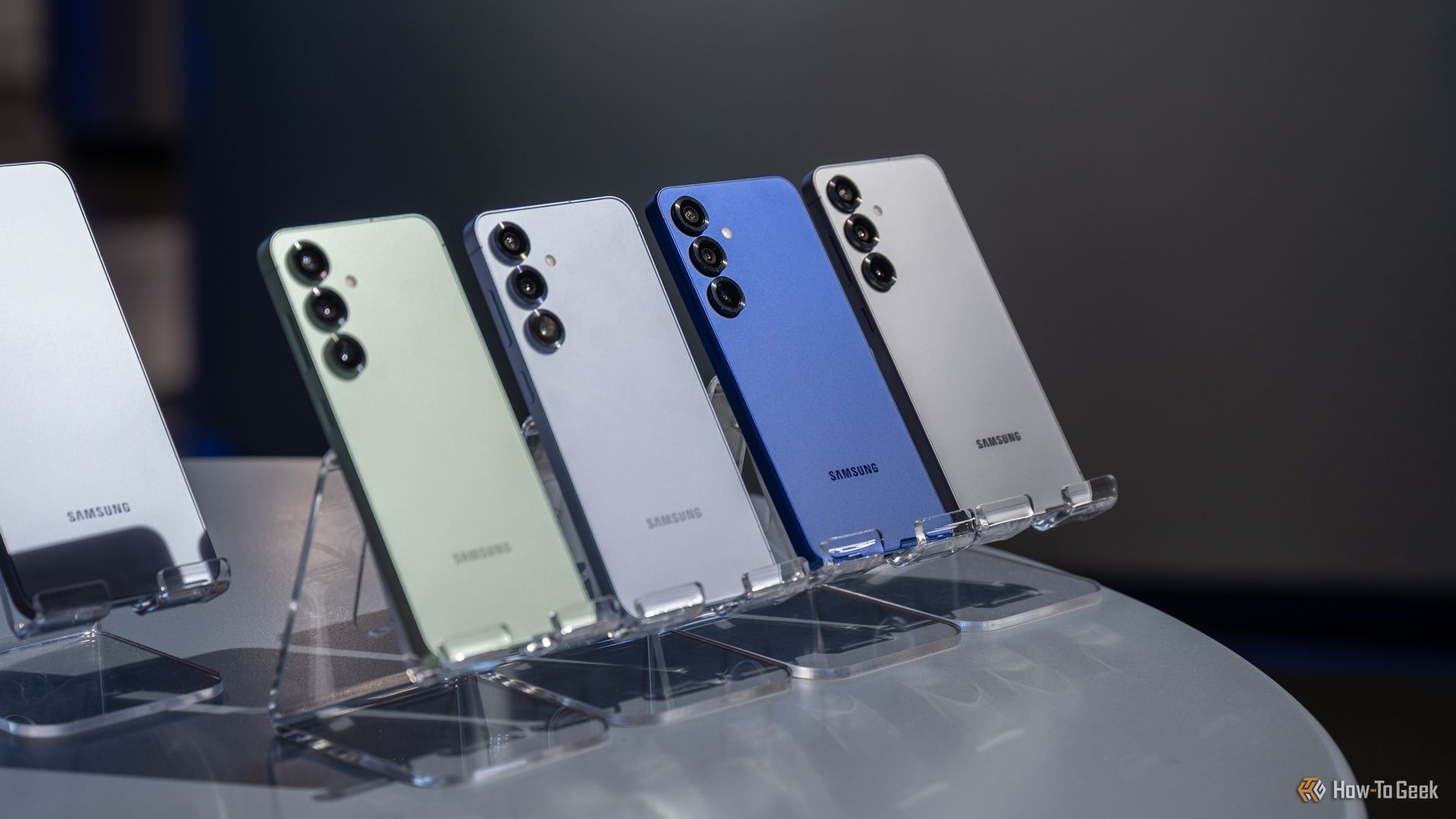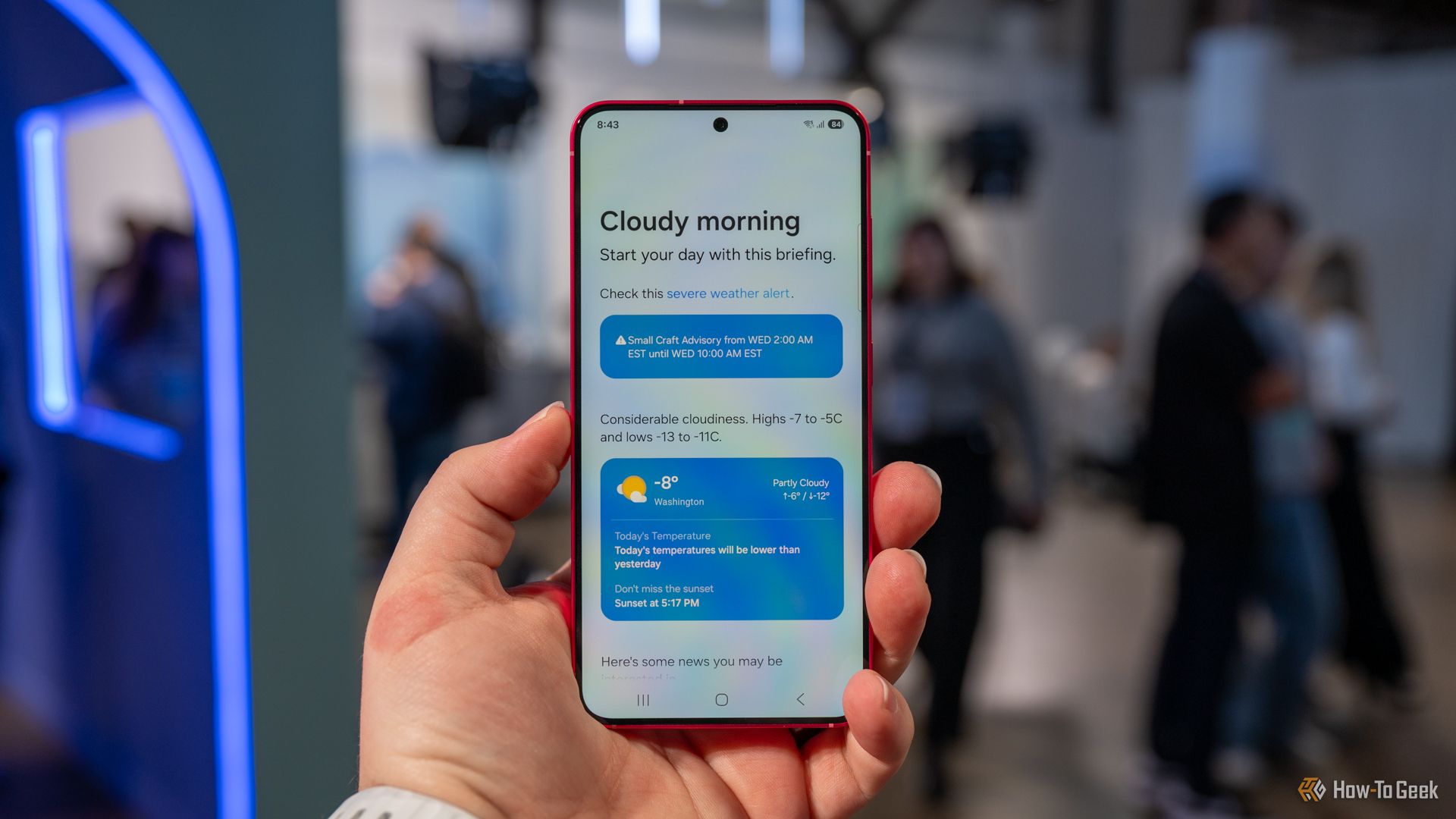It’s another year of refinements for Samsung with the announcement of the Galaxy S25 series. The hardware remains great, but the company hasn’t given much of a reason to upgrade, unless you’re interested in personalized AI features. I’ve gone hands-on with all three phone, and have some thoughts.
The Ultra Is the Only Phone Seeing Physical Changes
The Ultra lineup has always looked and felt like a phablet. It’s a large phone with a lot of power under the hood. That doesn’t change this year, but Samsung shaved off some weight and flattened out the device’s edges to make it much easier to hold.
Compared to the S24 Ultra, the Galaxy S25 Ultra, with its 6.9-inch QHD+ Dynamic AMOLED display, is 15 grams lighter than its predecessor. It’s still a heavy device, weighing 218g, but every little bit helps.
The flat sides match what we’ve seen on the smaller Galaxy flagships, and I absolutely love them. You can describe the new look as boxy, but the squared-off design with rounded corners is easy to hold and complements the flat display. The change definitely helps the large phone feel more compact.
Additionally, we’re getting a new 50MP ultrawide camera sensor, bumping it up from the 12MP found on the S24 Ultra. While I haven’t been able to snap many photos with the Galaxy S25 Ultra and analyze the image quality, this change should improve your wide shots and macrophotography. All of the other sensors, including the 200MP primary, 10MP 3X, and 50MP 5X telephoto cameras, remain the same.
Powering everything is the brand new Snapdragon 8 Elite for Galaxy and 12GB of RAM. Unlike previous Galaxy-branded Qualcomm chips, Samsung claims they have tweaked and customized the processor to handle all of the Galaxy S25 Ultra’s AI features, cameras, and ProVisual Engine. While I couldn’t put the 3nm chip through its paces during my brief hands-on time, I don’t doubt that this flagship will chew through anything you throw at it.
Another rather annoying fact is that Samsung isn’t fully integrating Qi2 into the Galaxy S25 Ultra despite reports from earlier this year. Instead, the company is following in OnePlus’ footsteps with the OnePlus 13 and selling a case that includes a magnetic connection. Only then can you mount the phone on MagSafe-compatible chargers and attach magnetic wallets and other accessories.
I’m thankful that Samsung could make these magnetic accessories work with the Galaxy S25 Ultra—especially as they caused S Pen issues on the S24 Ultra—but the lack of built-in support is a bit of a bummer for those who prefer to use their phone without a case. Apple has made MagSafe work since 2020, but Samsung still can’t figure out Qi2 in 2025.
The Samsung Galaxy S25 Ultra is available for pre-order starting at $1,299.99 with 256GB of storage. There are also 512GB and 1TB options available. You have the choice of Titanium Silverblue, Titanium Whitesilver, Titanium Gray, and Titanium Black color options. There are also Samsung-exclusive colors including Titanium Pinkgold, Titanium Jetblack, and Titanium Jadegreen. Devices should begin shipping on February 7, 2025.
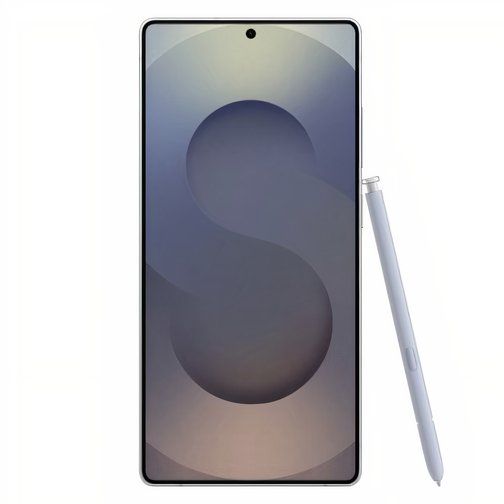
Samsung Galaxy S25 Ultra
The Samsung Galaxy S25 Ultra is a top-of-the-line smartphone with a 6.9-inch QHD+ Dynamic AMOLED 2X display and a 120Hz refresh rate. It boasts the Snapdragon 8 Elite processor, 12GB of RAM, and a 5,000mAh battery with 45W Super Fast Charging 2.0.
The Galaxy S25 and S25+ See the Most Minor Updates
If you held up the S25 and compared it to the S24, there’s a 99% chance I couldn’t tell the difference. Other than the slightest change to the physical dimensions and a small weight difference, the overall appearance is basically identical.
Like the S25 Ultra, both handsets are powered by the Snapdragon 8 Elite for Galaxy and receive the same tuning that should provide optimum performance. The other good news is that both devices have 12GB of RAM standard. Last year, if you preferred the smaller form-factor, you were stuck with 8GB. I will always celebrate when “small” phones are equal spec-for-spec with their physically larger siblings.
Holding both of these phones, I can tell you the hardware is great. It’s premium, should be comfortable enough to use all day, and is just a solid device. If you buy either of these, you shouldn’t be disappointed.
But this is what many have said about the flagship Galaxy lineup for the last several years. There’s just not much (if any) difference year over year. If you have a four-year-old handset you’re looking to upgrade, these are great options. If you bought last year’s device, the camera sensors haven’t been touched. There’ll be software improvements, but the hardware is identical.
As with the Ultra, the Galaxy S25 and S25+ are available for pre-order starting today and will begin shipping on February 7, 2025. The smaller Galaxy S25 starts at $799.99 with 128GB of storage and is also available with 256GB. The Galaxy S25+ costs $999.99 with 256GB of storage, and the 512GB option costs a bit more.
Both phones can be purchased in Navy, IcyBlue, Mint, or Silver Shadow, with Blueblack, Coralred, and Pinkgold options sold exclusively from Samsung’s website.
-
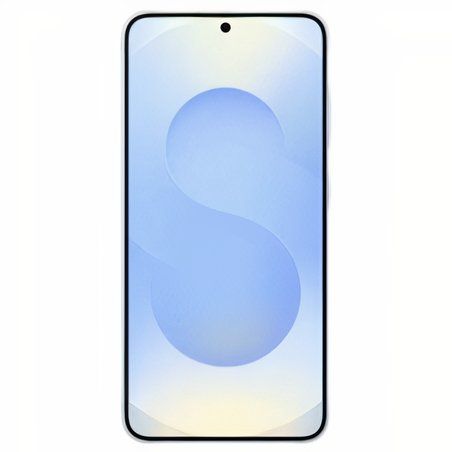
Samsung Galaxy S25
The Samsung Galaxy S25 is a powerful and compact smartphone with a 6.2-inch Dynamic AMOLED 2X display and a 120Hz refresh rate. It is powered by the Snapdragon 8 Elite processor, 12GB of RAM, and a 4,000mAh battery with 25W Super Fast Charging.
-
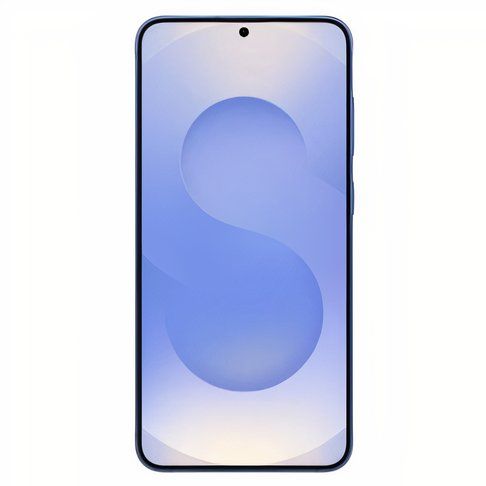
Samsung Galaxy S25 Plus
The Samsung Galaxy S25 Plus is a premium smartphone with a 6.7-inch QHD+ Dynamic AMOLED 2X display and a 120Hz refresh rate. It features the Snapdragon 8 Elite processor, 12GB of RAM, and a 4,900mAh battery with 45W Super Fast Charging 2.0.
AI Features I’m Excited to Try
2024 was the year that on-device AI features started to take form, but the actual utility wasn’t necessarily there. Sure, you could draw a rough outline of a tree and let your phone generate an image, but the real-world functionality just wasn’t there.
This year, Samsung is making AI helpful, useful, and personalized to you. The first two new features, the Now Brief and Now Bar, provide helpful information based on your habits and routines. The Now Brief provides a morning and evening rundown of upcoming meetings, weather, suggestions for calling someone on their birthday, and much more. The Now Bar looks similar to Apple’s Live Activities and provides status updates on your lock screen. You can expect sports scores and other suggestions from apps and your Now Brief to show up there.
All of this personal “training data” is locked onto your device in a dedicated core and can be deleted anytime. Of course, you can transfer this information to a new Samsung phone using the Smart Switch app once you choose to upgrade.
You can also now access multi-step multi-modal AI requests by simply long-pressing the side (power) button. Doing so launches a new Gemini interface that you can either type into or speak instructions to. In an example I saw, a Samsung representative asked Gemini to check YouTube for videos about the Galaxy Fold 6, summarize key takeaways, and paste the findings into Samsung Notes. The results needed some nudging, but the phone eventually got there.
At launch, cross-app actions will work within all of Google’s and Samsung’s apps, as well as WhatsApp and Spotify.
Samsung is making on-screen text and image selections much easier. With the introduction of AI Select (found in the Edge Panel), the tool can analyze what’s happening on your screen and provide suggestions. For example, the feature might suggest making a gif if you’re watching a video. Or, if you’re looking at a photo, you could use generative AI to add or remove a subject.
And lastly, Samsung is introducing conversation search to the Settings menu. This is a feature that I believe will truly help most people. Galaxy phones are known for having a million and one settings, but knowing where to search to find a specific toggle requires you to know certain keywords. With conversation search, you can tell the phone that you’re missing notifications in an app, and it might suggest checking your battery settings to ensure background syncing is working. The feature takes the requirement of knowing where to look off of your shoulders.
The conversational search also comes to Samsung’s native Gallery app.
Annoyingly, Samsung hasn’t announced which of these AI features will make it to previous generations. The company did tell us some (if not all) should be available on the Galaxy S24 series and the latest Flip and Folds, but no timeline was provided. I expect we’ll see these contextual features kept exclusive on the Galaxy S25 lineup for at least a couple of months, with them rolling out widely with OneUI 7 once the initial sales period ends.
For now, these are my initial impressions of the Galaxy S25 lineup after about an hour with the phones. Keep an eye on How-To Geek over the coming weeks as we begin testing each handset and share our full reviews!
-

Samsung Galaxy S25
The Samsung Galaxy S25 is a powerful and compact smartphone with a 6.2-inch Dynamic AMOLED 2X display and a 120Hz refresh rate. It is powered by the Snapdragon 8 Elite processor, 12GB of RAM, and a 4,000mAh battery with 25W Super Fast Charging.
-

Samsung Galaxy S25 Plus
The Samsung Galaxy S25 Plus is a premium smartphone with a 6.7-inch QHD+ Dynamic AMOLED 2X display and a 120Hz refresh rate. It features the Snapdragon 8 Elite processor, 12GB of RAM, and a 4,900mAh battery with 45W Super Fast Charging 2.0.
-

Samsung Galaxy S25 Ultra
The Samsung Galaxy S25 Ultra is a top-of-the-line smartphone with a 6.9-inch QHD+ Dynamic AMOLED 2X display and a 120Hz refresh rate. It boasts the Snapdragon 8 Elite processor, 12GB of RAM, and a 5,000mAh battery with 45W Super Fast Charging 2.0.


